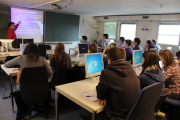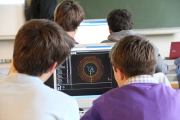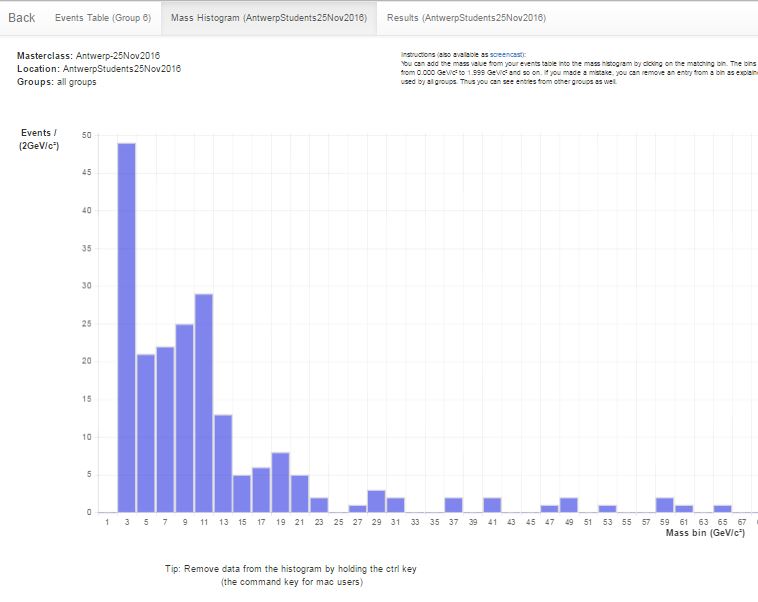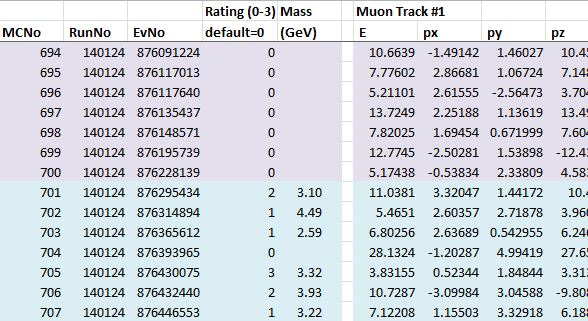
|
|
|
|
|
|
|
CMS Masterclass Introduction |
| ||||||||||||||
| The CMS masterclass is a way for students to be "particle physicists for a day" using authentic data from the Compact Muon Solenoid (CMS) experiment in the Large Hadron Collider (LHC) at CERN. The outline below shows how it works and what the tools are. | |||||||||||||||
Enduring Understandings |
Philosophy |
Recommendations for a Successful CMS Masterclass |
||
Students should remember long after the masterclass:
|
How we try to go about it:
|
N students where N≤30
The optimal number of students is about 30 or fewer. It is possible to have more but please proceed cautiously. |
N/2 computers
Two students to a computer: they can help each other and check each other's judgements. |
N/10 mentors or tutors
At least one physicist to every 10 students. In some cases, a teacher with a developed background in masterclasses can help bend this ratio. |
Main Measurement Tool: iSpy event display |
|
|
Versions in use for
International Masterclasses "Classic" iSpy: https://www.i2u2.org/elab/cms/ispy-webgl-2017/ Advanced iSpy: https://www.i2u2.org/elab/cms/ispy-webgl/ (recommended, fully supported) Use case:
Data Analysis:

Low bandwidth: Download local event display and data. |
Other Versions Use cases:
Data Analysis:

Low bandwidth: Download local version. |